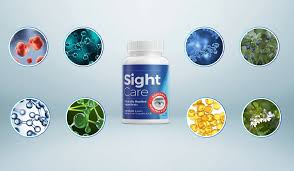Sight Care: A Comprehensive Guide to Protecting and Enhancing Your Vision. (Health & Beauty - Beauty)

Item ID 3914568 in Category: Health & Beauty - Beauty
Sight Care: A Comprehensive Guide to Protecting and Enhancing Your Vision. | |
Anatomy of the Eye The eye is a complex organ SightCare Reviews that functions similarly to a camera, capturing light and converting it into electrical signals that the brain interprets as images. Key components include the cornea, lens, retina, and optic nerve. The cornea and lens work together to focus light onto the retina, where photoreceptor cells (rods and cones) convert light into neural signals. These signals are then transmitted to the brain via the optic nerve. Understanding the anatomy of the eye is essential for recognizing how various conditions can impact vision. Common Eye Problems Refractive Errors Refractive errors occur when the shape of the eye prevents light from focusing directly on the retina. The most common types include: • Myopia (nearsightedness): Difficulty seeing distant objects clearly. • Hyperopia (farsightedness): Difficulty seeing close objects clearly. • Astigmatism: Blurred vision due to an irregularly shaped cornea or lens. Age-Related Macular Degeneration (AMD) AMD is a leading cause of vision loss in people over 50. It affects the macula, the central part of the retina responsible for sharp, detailed vision. There are two types of AMD: dry and wet. Dry AMD is more common and progresses slowly, while wet AMD is less common but can cause rapid vision loss. Cataracts Cataracts are clouding of Sight Care Supplement the eye's lens, leading to decreased vision. They are common in older adults and can be treated effectively with surgery. Glaucoma Glaucoma is a group of eye conditions that damage the optic nerve, often due to elevated intraocular pressure. It can lead to irreversible vision loss if not managed properly. Diabetic Retinopathy This condition affects individuals with diabetes and results from damage to the blood vessels in the retina. It can cause vision impairment and blindness if not treated promptly. Dry Eye Syndrome Dry eye syndrome occurs when the eyes do not produce enough tears or the tears evaporate too quickly. It can cause discomfort, redness, and blurred vision. Conjunctivitis Also known as pink eye, conjunctivitis is an inflammation of the conjunctiva, the thin layer covering the white part of the eye. It can be caused by infections, allergies, or irritants. Preventive Measures for Eye Health Regular Eye Exams Routine eye exams are crucial for detecting eye problems early and maintaining overall eye health. Adults should have their sight care checked every two years, while individuals with existing conditions or a family history of eye diseases may require more frequent visits. Healthy Diet and Nutrition A balanced diet rich in vitamins and minerals supports eye health. Key nutrients include: • Vitamin A: Essential for maintaining good vision and preventing night blindness. Found in carrots, sweet potatoes, and leafy greens. • Vitamin C and E: Antioxidants that protect the eyes from damage. Found in citrus fruits, nuts, and seeds. • Omega-3 fatty acids: Reduce the risk of dry eyes and AMD. Found in fish, flaxseeds, and walnuts. Protective Eyewear Wearing protective eyewear, such as sunglasses with UV protection and safety goggles, can prevent eye injuries and reduce the risk of cataracts and AMD. Managing Chronic Conditions Chronic conditions like diabetes and hypertension can adversely affect eye health. Managing these conditions through medication, lifestyle changes, and regular check-ups is essential for preventing complications like diabetic retinopathy and hypertensive retinopathy. Digital Eye Strain and Blue Light Exposure With increased screen time, digital eye strain has become a common issue. Symptoms include dry eyes, headaches, and blurred vision. Tips to reduce digital eye strain include: • 20-20-20 rule: Every 20 minutes, look at something 20 feet away for at least 20 seconds. • Blue light filters: Use screen filters or glasses that block blue light. • Proper lighting: Ensure adequate lighting to reduce glare on screens. Treatment Options Glasses and Contact Lenses Corrective lenses, such as glasses and contact lenses, are the most common treatment for refractive errors. SightCare Reviews They help focus light correctly onto the retina, improving vision.  | |
| Related Link: Click here to visit item owner's website (1 hit) | |
| Target Prov.: British Columbia Target City : Denver Last Update : Jul 24, 2024 6:52 AM Number of Views: 79 | Item Owner : Sight Care Contact Email: Contact Phone: 2025551092 |
| Friendly reminder: Click here to read some tips. | |
© 2025 CANetAds.com
USNetAds.com | GetJob.us | UKAdsList.com | AUNetAds.com | INNetAds.com | CNNetAds.com | Hot-Web-Ads.com | USAOnlineClassifieds.com
2025-04-02 (0.422 sec)